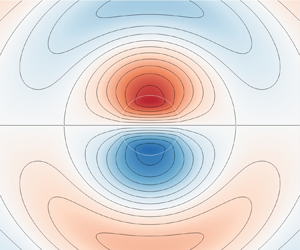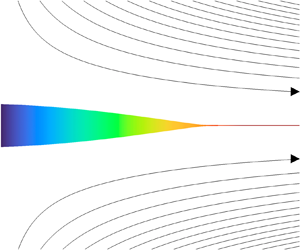Refine listing
Actions for selected content:
1416829 results in Open Access
Wave scattering and radiation by a surface-piercing vertical truncated metamaterial cylinder
-
- Journal:
- Journal of Fluid Mechanics / Volume 983 / 25 March 2024
- Published online by Cambridge University Press:
- 12 March 2024, A7
-
- Article
-
- You have access
- Open access
- HTML
- Export citation
Stable production of fluid jets with vanishing diameters via tip streaming
-
- Journal:
- Journal of Fluid Mechanics / Volume 983 / 25 March 2024
- Published online by Cambridge University Press:
- 12 March 2024, A4
-
- Article
-
- You have access
- Open access
- HTML
- Export citation
BJP volume 224 issue 4 Cover and Back matter
-
- Journal:
- The British Journal of Psychiatry / Volume 224 / Issue 4 / April 2024
- Published online by Cambridge University Press:
- 12 March 2024, p. b1
- Print publication:
- April 2024
-
- Article
-
- You have access
- Export citation
Association of Alcohol Consumption with Cognition and Functionality in Older Adults Aged 75+ Years: The Pietà Study
-
- Journal:
- Canadian Journal on Aging / La Revue canadienne du vieillissement / Volume 43 / Issue 4 / December 2024
- Published online by Cambridge University Press:
- 12 March 2024, pp. 518-528
-
- Article
- Export citation
Halls of Power: Changing Political and Administrative Culture at the Palace of Westminster in the Sixteenth Century
-
- Journal:
- Journal of British Studies / Volume 63 / Issue 2 / April 2024
- Published online by Cambridge University Press:
- 12 March 2024, pp. 390-410
-
- Article
-
- You have access
- Open access
- HTML
- Export citation
QUA volume 118 Cover and Front matter
-
- Journal:
- Quaternary Research / Volume 118 / March 2024
- Published online by Cambridge University Press:
- 12 March 2024, pp. f1-f4
-
- Article
-
- You have access
- Export citation
Gabrielle Thomas, The Image of God in the Theology of Gregory of Nazianzus (Cambridge: CUP, 2019), pp. xiv + 196. $105.00
-
- Journal:
- Scottish Journal of Theology / Volume 78 / Issue 1 / February 2025
- Published online by Cambridge University Press:
- 12 March 2024, pp. 75-76
- Print publication:
- February 2025
-
- Article
- Export citation
Lynneth Miller Renberg. Women, Dance, and Parish Religion in England, 1300–1640 Gender in the Middle Ages Series 19. Woodbridge: Boydell Press, 2022. Pp. 268. $85.00 (cloth).
-
- Journal:
- Journal of British Studies / Volume 63 / Issue 2 / April 2024
- Published online by Cambridge University Press:
- 12 March 2024, pp. 458-459
-
- Article
- Export citation
Introduction to special issue: new developments in speleothem paleoclimate and paleoenvironmental science
-
- Journal:
- Quaternary Research / Volume 118 / March 2024
- Published online by Cambridge University Press:
- 12 March 2024, p. 1
-
- Article
- Export citation
Estimation of the inferior caval vein saturation using high-fidelity non-invasive haemodynamic values and validation of modelled estimates
-
- Journal:
- Cardiology in the Young / Volume 34 / Issue 7 / July 2024
- Published online by Cambridge University Press:
- 12 March 2024, pp. 1529-1534
-
- Article
- Export citation
ANZ VOLUME 65 ISSUE 3 COVER AND BACK MATTER
-
- Journal:
- The ANZIAM Journal / Volume 65 / Issue 3 / July 2023
- Published online by Cambridge University Press:
- 12 March 2024, pp. b1-b6
-
- Article
-
- You have access
- Export citation
BJP volume 224 issue 4 Cover and Front matter
-
- Journal:
- The British Journal of Psychiatry / Volume 224 / Issue 4 / April 2024
- Published online by Cambridge University Press:
- 12 March 2024, pp. f1-f3
- Print publication:
- April 2024
-
- Article
-
- You have access
- Export citation
David Ney. The Quest to Save the Old Testament: Mathematics, Hieroglyphics, and Providence in Enlightenment England Bellingham: Lexham Press, 2022. Pp. 324. $29.99 (paper).
-
- Journal:
- Journal of British Studies / Volume 63 / Issue 2 / April 2024
- Published online by Cambridge University Press:
- 12 March 2024, pp. 461-463
-
- Article
- Export citation
TWO-CARDINAL DERIVED TOPOLOGIES, INDESCRIBABILITY AND RAMSEYNESS
- Part of
-
- Journal:
- The Journal of Symbolic Logic , First View
- Published online by Cambridge University Press:
- 12 March 2024, pp. 1-29
-
- Article
-
- You have access
- Open access
- HTML
- Export citation
The Master in Bondage: Factory Workers in China, 1949–2019 Huaiyin Li. Stanford, CA: Stanford University Press, 2023, 333 pp. $32.00 (pbk). ISBN 9781503635289
-
- Journal:
- The China Quarterly / Volume 258 / June 2024
- Published online by Cambridge University Press:
- 12 March 2024, pp. 571-572
- Print publication:
- June 2024
-
- Article
- Export citation
Lady Halkett Anne; Suzanne Trill, ed. A True Account of My Life and Selected Meditations The Other Voice in Early Modern Europe: The Toronto Series, 87. Toronto: Iter Press, 2022. Pp. 408. $69.95 (cloth).
-
- Journal:
- Journal of British Studies / Volume 63 / Issue 2 / April 2024
- Published online by Cambridge University Press:
- 12 March 2024, pp. 446-447
-
- Article
- Export citation
Blood, obsidian, and the Teotihuacan cult of the mirror
-
- Journal:
- Ancient Mesoamerica / Volume 35 / Issue 2 / Summer 2024
- Published online by Cambridge University Press:
- 12 March 2024, pp. 451-471
- Print publication:
- Summer 2024
-
- Article
-
- You have access
- Open access
- HTML
- Export citation
Law and Political Economy in China: The Role of Law in Corporate Governance and Market Growth Tamar Groswald Ozery. Cambridge: Cambridge University Press, 2023. 252 pp. $125.00 (hbk). ISBN 9781009158244
-
- Journal:
- The China Quarterly / Volume 258 / June 2024
- Published online by Cambridge University Press:
- 12 March 2024, pp. 567-569
- Print publication:
- June 2024
-
- Article
- Export citation
Jason Peacey, ed. Making the British Empire, 1660–1800 Studies in Imperialism. Manchester: Manchester University Press, 2022. Pp. 216. $29.95 (paper).
-
- Journal:
- Journal of British Studies / Volume 63 / Issue 2 / April 2024
- Published online by Cambridge University Press:
- 12 March 2024, pp. 465-466
-
- Article
- Export citation
Ideals with componentwise linear powers
- Part of
-
- Journal:
- Canadian Mathematical Bulletin / Volume 67 / Issue 3 / September 2024
- Published online by Cambridge University Press:
- 12 March 2024, pp. 833-841
- Print publication:
- September 2024
-
- Article
- Export citation






